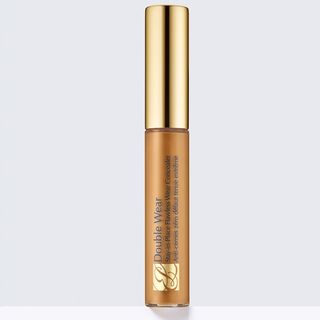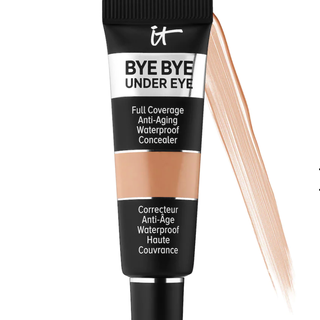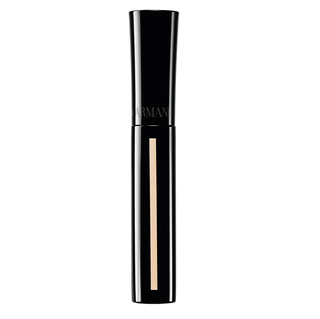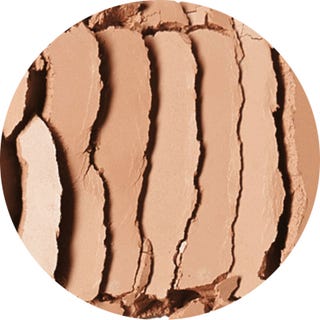Acne, age spots and hyperpigmentation and dark circles are normal part of life and having skin, and they’re nothing to be ashamed of. But for when you’re looking for even-toned, flawless coverage, the right concealer can feel like a magic wand that can cancel out discoloration and glide over uneven texture.
Great concealers come in a myriad of consistencies, forms and finishes, from liquid to cream to stick and beyond. The key is to find the right formula and tone for whatever issue you’re trying to hide. Here are all the makeup tips and tricks you need to know to make your concealer look flawless:
Start by choosing the right concealer
Finding the right tone and the right color for the task at hand is crucial. For undereyes, you’ll want to opt for a color that’s a shade lighter than your natural skin tone. “This will brighten up the undereye area and disguise the dark circles,” says makeup artist Erica Whelan. For age spots, scars and hyperpigmentation, “choose a concealer shade that matches your foundation color,” she says.
When it comes to tone, our pros say peach shades cancel out blueish undereye circles and dark spots from sun or aging. Green tones hide red blemishes — follow up with a concealer that matches your skin tone exactly for ultimate camouflaging. Yellow-toned concealers help to correct uneven skin tone from redness or hyperpigmentation. For mature skin and undereye puffiness, pick a luminizing formula that will reflect light and add a glow to the skin, but make sure it’s not shimmery, which will settle into fine lines and wind up accentuating what you’re trying to disguise.
Apply skincare and foundation first
Apply any moisturizer, primer and foundation before reaching for concealer. If you apply your foundation first, you’re blurring the look of imperfections and likely won’t need to use as much concealer. If you don’t use foundation at all and just spot-conceal, be sure to hydrate your skin first!
Hide dark circles and undereye discoloration
If you want to brighten dark undereye circles, grab a concealer that has a radiant or luminizing formula, says Whelan. Our experts prefer liquid formulas for the thin skin around the eyes, since creams and thicker formulas can settle into fine lines and wrinkles.
Instead of sweeping over the discoloration in a semi-circle shape, draw an inverted triangle which highlights the front area of your face and creates a lifted illusion. For best results, “dot the concealer under the eye and tap the product into place with your ring finger or a small fluffy eye shadow brush,” says Whelan.
Disguise puffiness and undereye bags
While makeup can’t change form, it can create illusions to distract from any features you want to hide (or accentuate — think contouring). Liquids are “great to use if you need to brighten an area,” says Joy Fennell, makeup artist and founder of The Joy in Beauty and All Black Everything Summit.
Using a tone that’s 1-2 shades lighter than your foundation, “add [this] highlighting concealer pen just above and below the area where the under eye is most puffy,” says Whelan. “By adding light to those areas, it makes those areas more noticeable and makes the puffiness look less noticeable.”
Cover up blemishes and acne
If you’ve already addressed acne with your skincare routine but are looking to hide any bumps or redness in the interim, “choose a heavier cream formula like a stick concealer,” advises Whelan, and apply with “a fine pointed brush to place the concealer exactly where you want it to go. Gently blend the edges of the concealer with a brush, edge of sponge, or finger to blend into the skin for a seamless blend.”
Camouflage dark spots and hyperpigmentation
“Choose a heavier cream formula to cover sun/age spots,” says Whelan: It should be dense enough to fully camouflage the darkness. “Apply foundation first to even out the skin tone, then apply concealer to the spot for maximum coverage,” says Whelan. “If you are trying to tone down dryness, make sure to use a hydrating formula and not a matte one,” says Fennell.
Expertly cover up scars and pockmarks
For a small scar, Fennell says a crayon or pencil formula is great; simply trace or fill in the mark with the fine point. For larger scars, “liquid wouldn’t be a good choice because it moves around on the face and its formula isn’t heavy enough to conceal,” she says. Instead, apply pot or cream concealer using a brush or your fingers for the best blend.
Stop cakey concealer in its tracks
Prevent concealer from getting cakey or settling in the creases around your eyes by blotting the excess product after application. Split a tissue into two layers, and press one of the sheets against skin to remove excess oil or too-thick product.
Set with a powder for ultimate lasting power
“If you have oily skin, make sure you set [your concealer] with a powder to avoid it moving around,” says Fennell. Do so by “lightly tapping a loose translucent powder over the area,” says Whelan. “This helps the concealer stay in place throughout the day.”
This content is created and maintained by a third party, and imported onto this page to help users provide their email addresses. You may be able to find more information about this and similar content at piano.io




